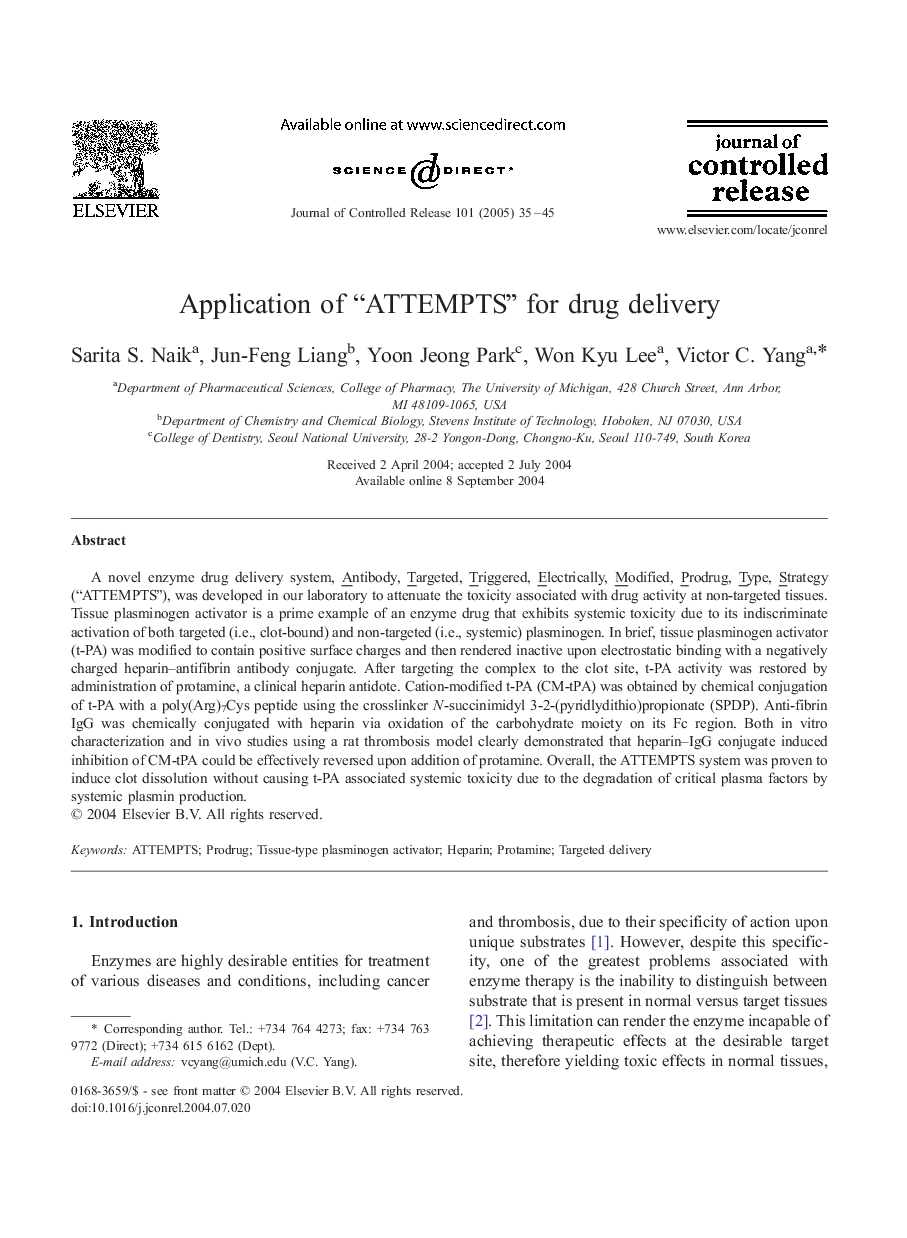| Article ID | Journal | Published Year | Pages | File Type |
|---|---|---|---|---|
| 9774693 | Journal of Controlled Release | 2005 | 11 Pages |
Abstract
A novel enzyme drug delivery system, Antibody, Targeted, Triggered, Electrically, Modified, Prodrug, Type, Strategy (“ATTEMPTS”), was developed in our laboratory to attenuate the toxicity associated with drug activity at non-targeted tissues. Tissue plasminogen activator is a prime example of an enzyme drug that exhibits systemic toxicity due to its indiscriminate activation of both targeted (i.e., clot-bound) and non-targeted (i.e., systemic) plasminogen. In brief, tissue plasminogen activator (t-PA) was modified to contain positive surface charges and then rendered inactive upon electrostatic binding with a negatively charged heparin-antifibrin antibody conjugate. After targeting the complex to the clot site, t-PA activity was restored by administration of protamine, a clinical heparin antidote. Cation-modified t-PA (CM-tPA) was obtained by chemical conjugation of t-PA with a poly(Arg)7Cys peptide using the crosslinker N-succinimidyl 3-2-(pyridlydithio)propionate (SPDP). Anti-fibrin IgG was chemically conjugated with heparin via oxidation of the carbohydrate moiety on its Fc region. Both in vitro characterization and in vivo studies using a rat thrombosis model clearly demonstrated that heparin-IgG conjugate induced inhibition of CM-tPA could be effectively reversed upon addition of protamine. Overall, the ATTEMPTS system was proven to induce clot dissolution without causing t-PA associated systemic toxicity due to the degradation of critical plasma factors by systemic plasmin production.
Related Topics
Physical Sciences and Engineering
Materials Science
Biomaterials
Authors
Sarita S. Naik, Jun-Feng Liang, Yoon Jeong Park, Won Kyu Lee, Victor C. Yang,
